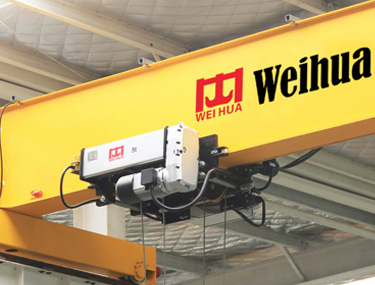As a core component of the crane's operating mechanism, the working condition of a
crane trolley wheel directly impacts the equipment's safety and production efficiency. In actual use, common trolley wheel failures primarily include the following:
I. Crane trolley wheel rim wear and deformation
1. Unilateral wear: Track installation deviation or inaccurate wheel assembly alignment can lead to excessive wear on one side of the rim. A port gantry crane experienced a track level error exceeding 3mm, resulting in monthly rim wear of 5mm, far exceeding the safety standard of 0.5mm/month.
2. Tread spalling: When the wheel load exceeds the material fatigue limit (for example, a 55Mn steel wheel under a wheel load >250kN), the tread will spall in a fish-scale pattern. A steel mill's cast crane trolley wheels developed spalling pits up to 8mm deep after two years of use.
3. Plastic deformation: When operating in high-temperature environments (>150°C) or under overload, the wheel tread can collapse and deform. The wheels of a crane trolley in an electrolytic aluminum workshop operated under continuous high temperatures, resulting in noticeable dents and deformation on the tread.
II. Bearing System Failure
1. Bearing Corrosion: Poor lubrication is the primary cause. When the grease relubrication interval exceeds 200 operating hours, the bearing temperature can rise sharply to over 120°C. A clogged lubrication line in a crane at a logistics center caused the bearing retainer to melt.
2. Seal Failure: Water vapor or dust intrusion accelerates bearing wear. After 18 months of use, the trolley bearings of a crane at a coastal shipyard developed corrosion pitting on the raceway due to seal aging and water ingress.
3. Axial Play: Loose locknuts can cause excessive axial wheel displacement (>2mm), leading to rail rubbing. This failure caused a 10mm step at the rail joint of a power station's bridge crane.
III. Cracking and Fracture of
Crane Trolley Wheels
1. Fatigue Cracks: Under alternating loads, radial cracks are prone to forming at the junction of the wheel spoke and hub. Ultrasonic testing revealed a 15mm-deep hidden crack in the wheel of a metallurgical crane after undergoing 800,000 load cycles.
2. Casting Defects: Casting defects such as shrinkage cavities and pinholes can reduce wheel strength. A newly replaced wheel on a foundry crane broke after only three months of use. Dissection revealed a 20mm shrinkage cavity in the wheel center.
3. Overload Fracture: Brittle fracture occurs when the impact load exceeds the material's tensile strength (e.g., σb ≥ 1080 MPa for 55Mn steel). A heavy object fell at a construction site, causing a wheel to fracture instantly.
IV. Track Gnawing and Tracking
1. Horizontal Skew: When the wheel's diagonal deviation exceeds 5mm, it will cause serpentine running. A 32-ton crane in a workshop experienced a threefold increase in track side wear due to an 8mm trolley span difference.
2. Vertical Skew: Wheel verticality deviation greater than 1/1000 can cause a sudden, erratic track gnawing. This fault caused frequent breakage of track plate bolts on a container terminal crane. 3. Poor track matching: Wheel diameter tolerances exceeding ±0.1% or track slopes exceeding 1/1000 can cause drive asynchrony. A 200-ton crane at a power plant experienced a 30% motor current fluctuation due to a 2mm difference in drive pulley diameter.
V. Electrical System-Related Faults
1. Uneven Motor Torque: Improper inverter parameter settings can cause output variations of >15% between drive motors, exacerbating wheel wear. A crane in an automated warehouse experienced abnormal wear on the driven wheel tread due to the lack of torque compensation.
2. Brake Asynchrony: A brake clearance difference >0.5mm can cause wheel slip. This fault caused periodic scratch streaks on the wheel tread of a subway track-laying crane.
3. Encoder Failure: Abnormal speed feedback can cause drive wheel speed differences. On a crane on an automobile production line, water ingress to the encoder resulted in a 5% linear speed difference between the two drive pulleys.

